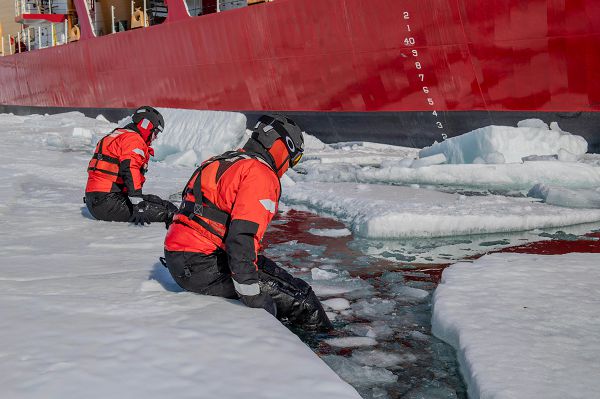
McMurdo Sound, Antarctica. (January 12, 2024): When we think of the Coast Guard, we often imagine fast boats chasing drug dealers and performing daring rescues at sea. What many may not realize is that ice rescues are one of the Coast Guard’s major missions. In this photo by Petty Officer 3rd Class Ryan Graves, Petty Officer 1st Class Joshua Tangermann and Petty Officer 2nd Class Harrison Bauer lower themselves into the water while practicing ice rescue techniques in frozen Antarctica. The USCG holds these training sessions each year during Operation Deep Freeze, an icebreaking and resupply mission to the South Pole. (More on this in our next newsletter).
In these rescues, Guardsman are fighting the “1-10-1” rule; once in the water a victim has one minute to control their breathing, 10 minutes before they are unable to rescue themselves, and one hour before they will succumb to hypothermia. Hypothermia is when your body loses heat faster than it can produce it. Symptoms of hypothermia begin with shivering, slurred speech, and slow, shallow breathing. Later stages include clumsiness, drowsiness, confusion, and loss of consciousness.
Other factors can contribute to speeding the development of hypothermia such as how much the victim moves in the water and the clothing they are wearing. Once their breathing and metabolic rates drop, chances are the event will go from a rescue to a recovery operation. Regardless, in waters below 32 degrees the victim has fifteen minutes or less to survive. This is why the USCG operates a Cold-Water Boot Camp to train divers and rescue personnel on how to manage these victims while protecting themselves.


